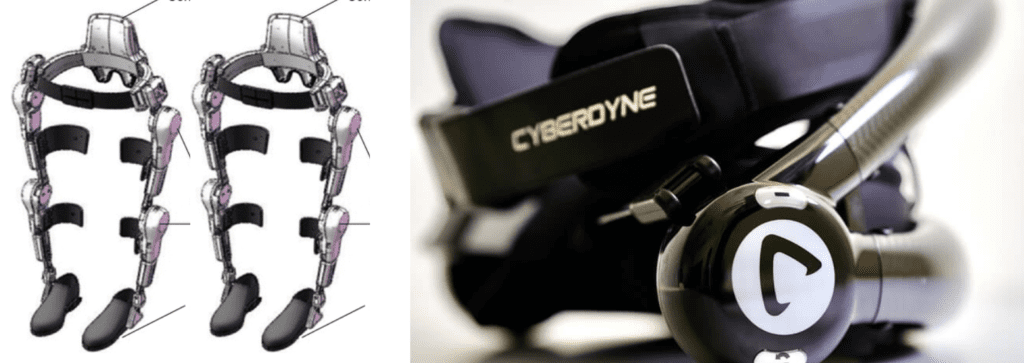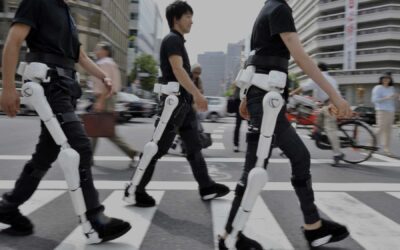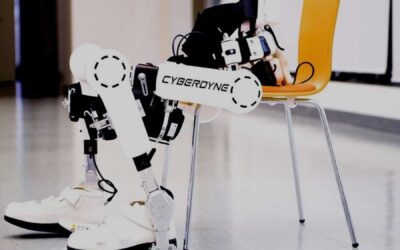HAL, the Wearable Cyborg™, stands for Hybrid Assistive Limb. HAL is a robot that can supplement, expand or improve the user’s physical capabilities, particularly for people who have physical mobility difficulties as a result of car accidents, illness, or ageing. Big data of humans and things are accumulated, analysed, and processed through artificial intelligence, thus accelerating the creation of a new cybernics industry that fuses humans with cyberspace and physical space.
HAL’s WORK

HAL supports and improves the user’s physical mobility, monitoring the user’s centre of gravity to infer intended body movement and direction of movement. Sensors attached to the skin pick up bio-potential signals generated in the brain immediately after the user attempts muscle movement, and operates motors incorporated in the user’s joints.
Cyberdyne Treatment with HAL
There are a few processes and procedures that are followed when the HAL is at work in a Cyberdyne treatment. They are:
- Think
When a person moves the body, he or she first thinks about the motions in his or her brain. By thinking “I want to walk.” the brain transmits necessary signals to muscles necessary for the motions through nerves.
- Send Signals
In a healthy body, each muscle can receive signals destined from the brain to it and move as strongly and fast as intended. However, in the case of HAL, it is done with help of the technology involved in stimulating the nerves.
- Read the signals
Signals sent to muscles by the brain leak on the skin surface as very faint signals, so-called “bio-electric signals [BES]”. HAL can read BES by only attaching the originally developed detectors on the surface of the wearer’s skin. By consolidating various information, HAL recognises what sorts of motions the wearer intends.

- Recognise the movement:
A man‘s speed of thinking in the brain, controlling the muscle, and moving the joint is extremely rapid. HAL, as well as man, is also able to process various information instantly and control the power unit promptly. When the body starts moving, HAL starts moving at the same time. Therefore, HAL can assist the wearer‘s motions.
- Feedback:
The mechanism to move the human body does not end up with only moving muscles. The brain confirms how the body moved on what sort of signals. When HAL has appropriately assisted the motions of “walking”, the feeling “I could walk!” is fed back to the brain. By this means, the brain becomes able to learn the way to emit necessary signals for “walking” gradually. This leads to “the important first step” in walking the physically challenged person without being assisted by HAL. The only robot that can provide appropriate solutions for motions to the brain is HAL. Rehabilitation Process:One of the many recovery areas is – The use of robots in ‘stroke rehabilitation: Stroke is among the leading causes of acquired disability in the United States, affecting nearly 800,000 Americans annually. The identification of more effective treatments for hemiparesis has been recognized as a top research priority. Intelligent, motor-driven devices for rehabilitation, or rehabilitation robotics, represent an exciting frontier with considerable potential to address these concerns. In the process of patient rehabilitation, Robots are used in- –Lower and upper limb exercise -As assistive devices -Lower and upper limb wearable devices Learn how individuals around the world use Cyberdyne technology to regain their mobility and restore their independence. Discover real storeys from real people about how Cyberdyne technology changed their lives forever. For a demo and more, Connect with us at https://rehabmodalities.com



